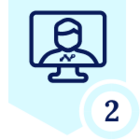Netskope Global Technical Success (GTS)
KB - How to Block Parent Domain While Allowing Subdomains
Netskope Cloud Version - 117
Objective
How to block parent domain while allowing subdomains
Prerequisite
Netskope SWG license is required
Context
The customer's operational guidelines may include strict policies that require utilizing Netskope’s features to develop distinct scenarios. An example of such a scenario involves blocking the parent domain while permitting its sub-domains.
For instance, we aim to enable access to "bitbucket.org/*" while restricting access to the root domain "bitbucket.org".
- URL to be blocked :
- URL to be allowed :
https://bitbucket.org/product/guides/getting-started/overview#a-brief-overview-of-bitbucket
Do You Know?
- Netskope URL list definition under Policies - Web - URL List can also be framed using Regexes. In this use-case scenario, we are going to leverage the below Regex format to device the Regexes :
https://docs.netskope.com/en/url-list-best-practices/
Configuration
- Go to Policies - Web - URL list and create a new URL list to match : bitbucket.org
- Go to Policies - Web - URL list and create another URL list to match : bitbucket.org/* . This URL list is essential to whitelist all the subdomains of bitbucket.org from getting blocked
- Go to Policies - Web - Custom Categories - New Custom category and create a Custom category to include the above two regexes as shown below :
- Go to Policies - Real Time protection and create a Block policy with the above Custom Category as shown below
Verification
- Access to the URL : https://bitbucket.org is blocked
- Access to the URLl : https://bitbucket.org/product/guides/getting-started/overview#a-brief-overview-of-bitbucket is allowed
Terms and Conditions
- All documented information undergoes testing and verification to ensure accuracy.
- In the future, it is possible that the application's functionality may be altered. If any such changes are brought to our attention, we will promptly update the documentation to reflect them.
Notes
- This article is authored by Netskope Global Technical Success (GTS).
- For any further inquiries related to this article, please contact Netskope GTS by submitting a support case with 'Case Type – How To Questions'.







